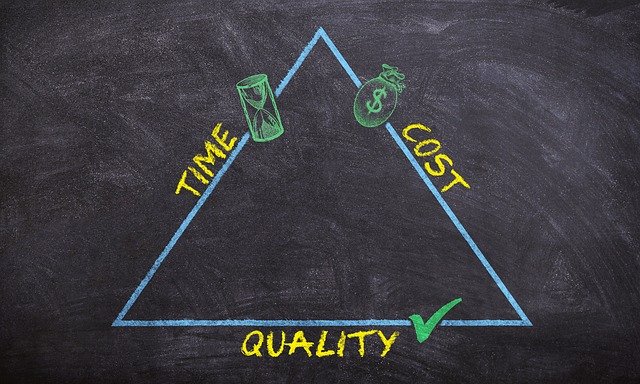Procurement Should Be About Cost And Value

We make decisions based on the values that we are brought up with at home, in school, and in the workplace. These values impact most purchasing decisions and are particularly important when evaluating suppliers to better understand how they can provide value beyond just a price difference.
The first thing you’re likely to do when thinking about buying something is to find out how much it will cost. In your head, you will begin to do a variety of calculations that will answer questions such as; Is it affordable? Is the price fair? Can I get a better deal elsewhere? From a young age, we are taught that the lower the price, the better. Then when we learn how to calculate percentages, am I getting the biggest discount to make the price even sweeter!
Total cost of ownership (TCO)
There is too much emphasis on short-term prices, not on long-term costs, in procurement. TCO (total cost of ownership) allows for strategic value-based procurement. Total cost of ownership is rarely used because there is no understanding of simple economic and financial modelling, and no support for it.
When procurement judges its performance on value, rather than price, it can fully adopt a total cost of ownership strategy. The purpose of procurement should be to maximize value.
An item’s total cost of ownership is the sum total of the indirect and direct costs that accompany its purchase over its life cycle.
A TCO model should be used in sourcing and spending decisions to justify relationships with suppliers, high quality and on-time delivery, flexibility, and value-added services.
The value approach can be included in indirect spend projects by working with requisitioners. The analysis of total-cost-of-ownership is ideally suited to capital equipment, functional outsourcing, and other large and complex projects.
To acknowledge life cycle costs, emphasize the value approach in statements of work and requests for quotations. For example, in government procurement, a buyer may be required to accept the lowest bid for a project.
Supplier management and TCO
Due to margin pressure and competition, many suppliers will focus on selling the long-term value of their products and services, rather than focusing on price. Life cycle costs are often addressed by suppliers in proposals and quotations.
By understanding their own value propositions, suppliers can educate buyers and assist them in making the TCO business case for a particular purchase. When combined with value-based procurement, value-based sales is a good relationship builder.
Your Finance department and TCO
Ensure that finance and accounting are involved in the TCO validation process. Buyers can benefit from the expertise of staff cost accountants to review price elements, especially since some internal data used for analysis may be confidential or unavailable.
When it comes to how the company’s money is spent, finance and procurement sometimes have functional friction. Bring them into the discussion for a better understanding of costs. Long-term collaboration occurs when the functions trust each other.
Basic economics
Both the price you are charged for something and the price you are prepared to pay for it is determined by many different factors, but supply and demand are at the core of economics. There are many factors influencing these in today’s world, including supply chains, geographic location, and politics.
Perceived value received
The perceived value you receive from any good or service plays a significant role in determining what you are willing to pay. Each company will have its own requirements, and the reasons for this will vary. This perceived value is what heavily influences why companies purchase the same product from different suppliers.
Price is part of the cost
A good or service’s price is more than the price it’s actually sold for. Companies will calculate intangibles in different ways, including intangibles that are difficult to measure in monetary terms. When considering other factors besides the price, it is important to take them into consideration, as they can range anywhere from the amount of time saved by using the product or service to the environmental and social impact of the supplier.
The cost may vary from supplier to supplier
It is becoming increasingly important for marketers to differentiate themselves from their competitors beyond just pricing by selling these sometimes less apparent differences. Suppliers will each have established their own core values that they believe contribute to the overall cost paid by their clients and provide value to their customers.
Conclusion
In any purchase, the price you pay for a product or service is crucial. However, it is important to remember to think about other factors that helps you get the best from your suppliers based on what matters most to you.
To learn more about how to make your company’s core values the driving force behind your sourcing, contracting and supplier management activities, go to oboloo.com. oboloo enables you to be supplier smart.

